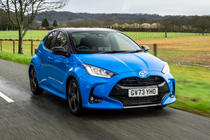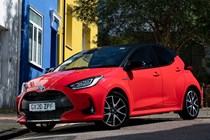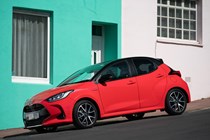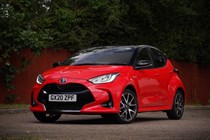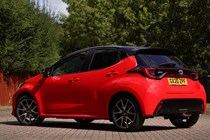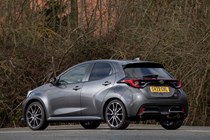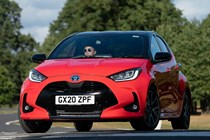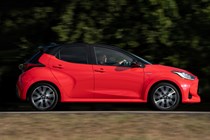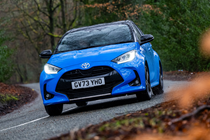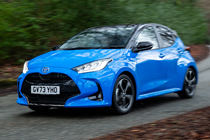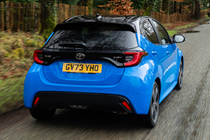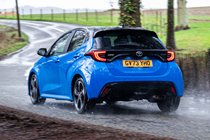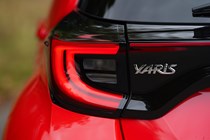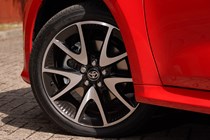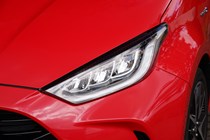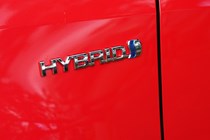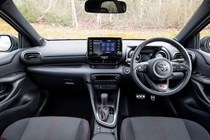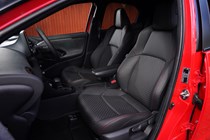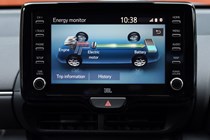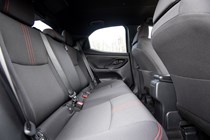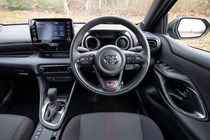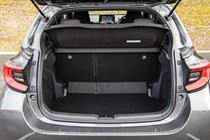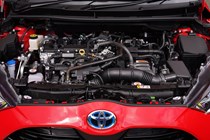
Toyota Yaris engines, drive and performance
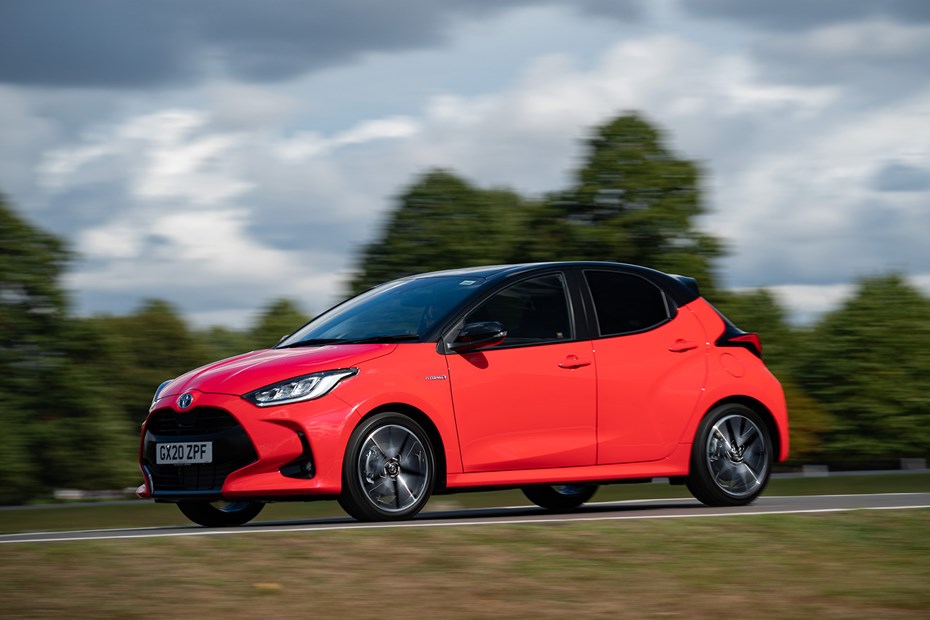
- Hybrid your only choice
- Perfect for town drivers
- Not something for everyone
Hybrid engine
There’s only one option with the Yaris. It’s a three-cylinder 1.5-litre petrol engine, plus an electrical motor, tied up with a CVT-style automatic gearbox.
Sounds complex. But it isn’t. It’s a non-plug in full hybrid, (or self-charging if you’re Toyota) which means you don’t need to charge it up from the mains to benefit from electrical assistance. On the flip side, it doesn’t really have an electric-only range as such, the idea of the battery is to assist the car in certain situations.
Toyota reckons that the Yaris can operate in pure EV mode for around 80% in typical urban journeys and can be driven up to 80mph before the petrol engine kicks into life – that’s 55mph higher than the previous version.
It certainly feels brawny. Total output in the lower-spec versions is 115hp, with the 0-62mph time coming in 10.3seconds. Truth be told, it feels a bit quicker than that time would suggest. Off the line, thanks to the electrical propulsion, it’s genuinely energetic. There are no traditional-style gears to go through, so 0-30mph is entertaining. It’s perfect for busy towns and cities.
For 2024, Toyota has introduced two new trim levels, Premium and GR Sport, that also come with a new, enhanced power unit. They’re still powered by a 1.5-litre hybrid, but Toyota has fettled with the electric element of the engine so it now produces 129hp.
Can you tell a difference on the road? Not really, but the enhanced engine still works well in tandem with the CVT gearbox and a little extra poke is always welcome.

As for the CVT, it’s a type of automatic gearbox often associated with loud and inconsistent engine noises, but this is one of the best versions around. The engine is remarkably quiet, which goes some way in explaining why acceleration is not tortuous on your eardrums. In fact, you really need to be caning it to notice that it’s a CVT.
What’s it like to drive?
- Confidence inspiring grip
- Harsh ride on big wheels
- Safe, could handle more power
On the larger 17in wheels it’s too firm. At motorway speeds the ride is more than fine, smoothing the road out as it pootles along. But at town speeds it makes the car seem like it’s constantly driving over a teenager’s acne riddled T-Zone. The GR Sport spec cars go one further with 18-inch wheels which only exacerbated the jittery ride issues – a trim to truly avoid if you value ride comfort.
The majority of cars sold in the UK will have 16-inch wheels. These cars get more compliant springs and dampers, plus higher profile tyres, and in combination this delivers a smoother if not class-leading ride.
The upside is that the Yaris really clings on round the corners. Dial in a bit more lock on a tight roundabout and there are heaps of grip before safe understeer takes over. Still, not quite as fun to drive as a Ford Fiesta though.
There are three drive modes to choose from; EV, Power, and Eco. EV tries to use electric power as much as possible. Power combines both sources and makes the steering feel just a touch heavier. Eco dulls everything and coasts as much as possible.


